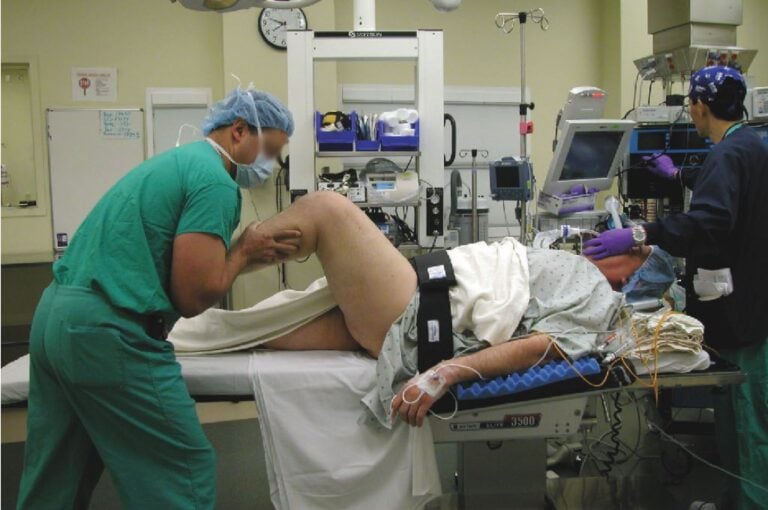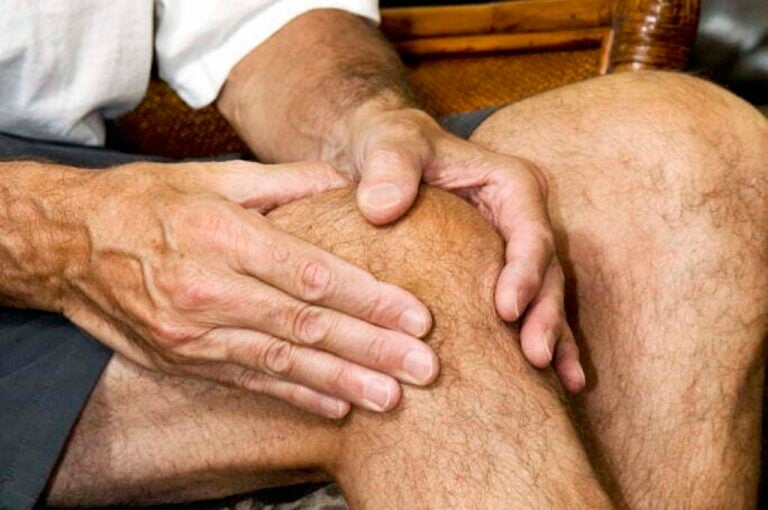Arthroscopy (not to be confused with arthroplasty) comes from two Greek words and literally means “to look within the joint.”1 Arthroscopic surgery allows your orthopedic surgeon to see, diagnose, and treat problems inside your knee. Your doctor may recommend knee arthroscopy if you have a condition that does not respond to non-surgical treatment but has not progressed so far as to indicate a total knee replacement is needed.
During the procedure your surgeon makes two or more small incisions near your knee joint and inserts an arthroscope, a very slender telescope with fibre-optic lighting attached to a camera that displays the interior of the joint on a high definition video screen. The image is used to guide small, specially designed instruments that work as very effective tools to treat some problems within your knee.2
Reasons for Knee Arthroscopy
According to the American Orthopaedic Society for Sports Medicine, more than 4 million knee arthroscopies are performed worldwide each year.2 Knee arthroscopy can be used to:3
- Remove or repair torn meniscal cartilage which cushions the space between the bones in the knee.
- Reconstruct a torn anterior cruciate (ACL) or posterior cruciate ligament (PCL).
- Trim torn pieces of articular cartilage.
- Remove loose fragments of bone or cartilage.
- Remove inflamed synovial tissue which lines the knee joint such as in patients with rheumatoid arthritis.4
- Repair misalignment of the patella (kneecap).
- Removal of a “Baker’s cyst” which is swollen bursa behind the knee that fills with fluid causing pain.
- Knee arthroscopy has also been used to treat arthritis in younger patients.4
During the procedure you will be under anesthesia and a tourniquet may be put around your thigh to help control bleeding. Your surgeon will make two or three small stab wounds around your knee and a saline solution will be pumped into your knee, inflating it out to make room for the small camera and surgical instruments.3 At the end of surgery, the saline will be drained from your knee, the surgical cuts sutured (stitched) or sealed with Steristrips and a bandage applied.
Risks and complications
Knee arthroscopy is generally a safe procedure for the treatment of knee injuries, but there are some risks that you should be aware of. Depending on your overall health and knee joint condition, the risks & complications may include:3
- Bleeding into the knee joint.
- Damage to the cartilage, meniscus, or ligaments in the knee.
- Formation of a blood clot in the leg.
- Injury to a blood vessel or nerve.
- Infection in the knee joint.
- Knee stiffness following the procedure.
- Compartment syndrome.
Recovery
Your recovery after knee arthroscopy will depend on what type of problem was treated. Recovery from simple arthroscopic surgery is usually much faster than recovery from traditional open knee surgery or total knee replacement.2 You may need to use crutches for a while after some types of procedures. Your doctor may also prescribe pain medicine, elevation and ice packs to aid in pain management. Higher impact activities may need to be avoided for some time and you will need to talk with your doctor before returning to your job if it involves physically demanding work.
Your recovery will take longer if you have had a more complex procedure performed. Unless you have had invasive or reconstructive surgery, you should be able to return to most physical activities after 6 to 8 weeks, or sometimes much sooner.2 If parts of your knee have been repaired or rebuilt, you may not be able to walk without crutches or a knee brace for several weeks. And a full recovery may take several months to a year.4
Outcomes
The final outcome of your surgery depends entirely upon what was found and what was done at the time of surgery.5 For example, if the articular cartilage in your knee has worn away completely, then full recovery may not be possible.2 If there is a lot of arthritis your doctor may recommend modifying your activities such as avoiding running or jogging. If a torn meniscus cartilage was found and removed, then you can usually return to your previous athletic activity. However, your doctor should warn you that heavily stressing your knee with part of the meniscus removed may lead to arthritis.5 In fact, arthritic changes may occur rapidly after arthroscopic surgery, particularly in some cases when the surgeon does severe debridement (clean up) of the cartilage.
More about surgical interventions for knee conditions >>
Sources
- AAOS – American Academy of Orthopaedic Surgeons, “Arthroscopy” https://orthoinfo.aaos.org/topic.cfm?topic=a00109
- AAOS – American Academy of Orthopaedic Surgeons, “Knee Arthroscopy” https://orthoinfo.aaos.org/topic.cfm?topic=a00299
- National Institutes of Health, “Knee Arthroscopy” https://www.nlm.nih.gov/medlineplus/ency/article/002972.htm
- MedicineNet, “Arthroscopy” https://www.medicinenet.com/arthroscopy/article.htm
- Johns Hopkins Medicine, “Johns Hopkins Sports Medicine Patient Guide to Knee Arthroscopy” https://www.hopkinsortho.org/knee_arthroscopy.html
image credit: Tim Evanson






